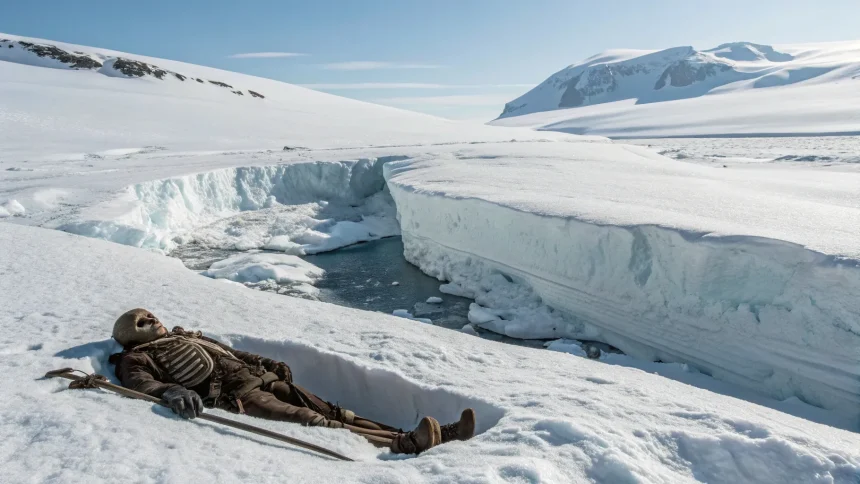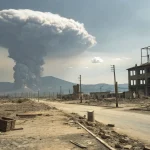The remains of Dennis Bell, a researcher who disappeared in Antarctica over six decades ago, have been discovered in a glacier crevasse at Admiralty Bay. The find brings closure to one of the longest-standing missing persons cases in polar exploration history.
Bell vanished in 1959 while working on King George Island, located off the Antarctic Peninsula. His body was recently recovered from a deep crevasse where he apparently fell to his death during a solo expedition across the ice field.
The Discovery
Search and recovery teams located Bell’s remains preserved in the ice of the glacier where he died. The extreme cold of Antarctica effectively preserved much of the body and equipment, creating what scientists refer to as a time capsule of the late 1950s Antarctic exploration era.
Authorities have not yet released details about who found the body or what led to the discovery after so many years. However, experts suggest that accelerated glacial melting, potentially linked to climate change, may have exposed areas of the ice field that were previously inaccessible.
Historical Context
Bell was part of a research team stationed at Admiralty Bay during the late 1950s, a period of increased scientific interest in Antarctica following the International Geophysical Year of 1957-58. This initiative marked the first major multinational scientific collaboration in Antarctica, with twelve countries establishing research bases across the continent.
King George Island, where Bell met his fate, is the largest of the South Shetland Islands. The area has since become home to research stations operated by several countries, including Chile, China, Russia, and South Korea.
Dangers of Antarctic Research
Bell’s death highlights the extreme dangers faced by early Antarctic explorers and scientists. Crevasses—deep cracks in glacial ice that can be hundreds of feet deep—remain one of the most significant hazards for those traversing Antarctica’s ice fields.
Dr. Elena Mikhailov, a glaciologist not involved in the recovery, explained: “Crevasses can be completely hidden by snow bridges, making them nearly impossible to detect without ground-penetrating radar, which wasn’t available in the 1950s. Even today, they pose serious risks to Antarctic operations.”
The dangers faced by Antarctic researchers include:
- Hidden crevasses in ice fields
- Extreme cold with temperatures dropping below -40°F
- Katabatic winds that can exceed 100 mph
- Limited rescue capabilities due to remote locations
Repatriation Plans
Officials are now working on plans to repatriate Bell’s remains. The process involves complex international agreements, as Antarctica is governed by the Antarctic Treaty System, which establishes the continent as a scientific preserve and bans military activity.
Family members of Bell have been notified of the discovery, according to sources close to the recovery operation. Many of his immediate relatives have since passed away, but several nieces and nephews survive him.
The recovery of Bell’s body adds to a small but significant number of similar discoveries in polar regions. As glaciers retreat worldwide, they occasionally reveal long-lost explorers, climbers, and researchers who met tragic ends in remote icy environments.
For the Antarctic scientific community, the discovery serves as both a somber reminder of the sacrifices made by early polar researchers and a fascinating glimpse into the history of human exploration on the frozen continent. Bell’s equipment and personal effects, if recoverable, may provide valuable insights into the practices and technologies used during this pioneering era of Antarctic research.









